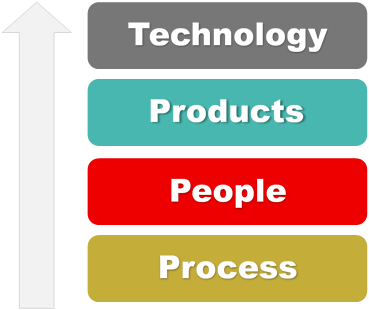With frontline staff as the end users of the hospital supply chain, operational success cannot be achieved without their full engagement and satisfaction.
These individuals are essential to implementing automated processes and delivering top quality care to patients. In fact, there are several reasons that supply chain leaders must make staff satisfaction a priority:
- The relationship between caregiver satisfaction and patient satisfaction can impact revenue. A large portion of the HCAP scores and reimbursement depends on how satisfied the patients are.1
- Staff satisfaction supports patient safety. Nurses have a full plate of responsibilities, and it can be frustrating when they are forced to spend an average of 2-3 hours of their shift doing supply chain related tasks.2 As a result, nurses may not be bringing their best to the bedside, which may lead to lower patient satisfaction and readmission. The level of staff engagement and their overall happiness can affect patient outcomes.
- Higher staff satisfaction can help to minimize turnover and related waste. Given the complexities and unpredictability of the healthcare industry, employee retention can often be a challenge. Hospitals are competing with one another to draw in the best staff, while at the same time, the number of nurses in the workforce is shrinking. Voluntary staff turnover is an issue that leads to wasted time and money and one that can be avoided. At the end of the day, the more time that staff get to spend doing what they are trained to do, the happier they are.

To improve staff satisfaction, hospital supply chain leaders should develop a system that aims at four critical components: process, people, products, and technology.
- Starting with process, leaders should look for opportunities to eliminate wasted motion. They should ensure that the clinicians are spending their time in meaningful ways, both for themselves and for the patients.
- Next, supply chain leaders should make people a priority. By focusing on staff needs, leaders build confidence in the system and engagement from clinicians and others, so when problems do arise, staff contributes to the solution. Instead of wasting time and energy, they can leverage the insights and expertise of frontline caregivers to identify and solve inefficient supply chain processes.
- Products come next. When the right products are in the right place at the right time, it helps to build the staff’s confidence in their supply chain. However, when cases are delayed or canceled due to missing products, both the caregivers and their patients become frustrated and confidence crumbles.
- And finally, technology is the pieces that ties everything together – process, products, and system users all rely on technology to sustain efficiencies in the supply chain. This is not possible unless the right automated solutions are implemented for the right processes. For example, technology can be used to automate a number of non-value-added tasks that clinicians do, such as manual counting, searching for misplaced products, tracking inventory, and conducting administrative tasks. Data-driven technologies also provide visibility into the supply chain that leads to more informed decisions. In sum, supply chain leaders must consider all of these dimensions to lay a foundation for better staff satisfaction.
1HFM Magazine (2016) “Building patient satisfaction: Physical environment improvements can lead to better patient experiences and HCAHPS scores”
2Cardinal Health (2/17) “The biggest untapped resource at your hospital? Your supply chain.”


